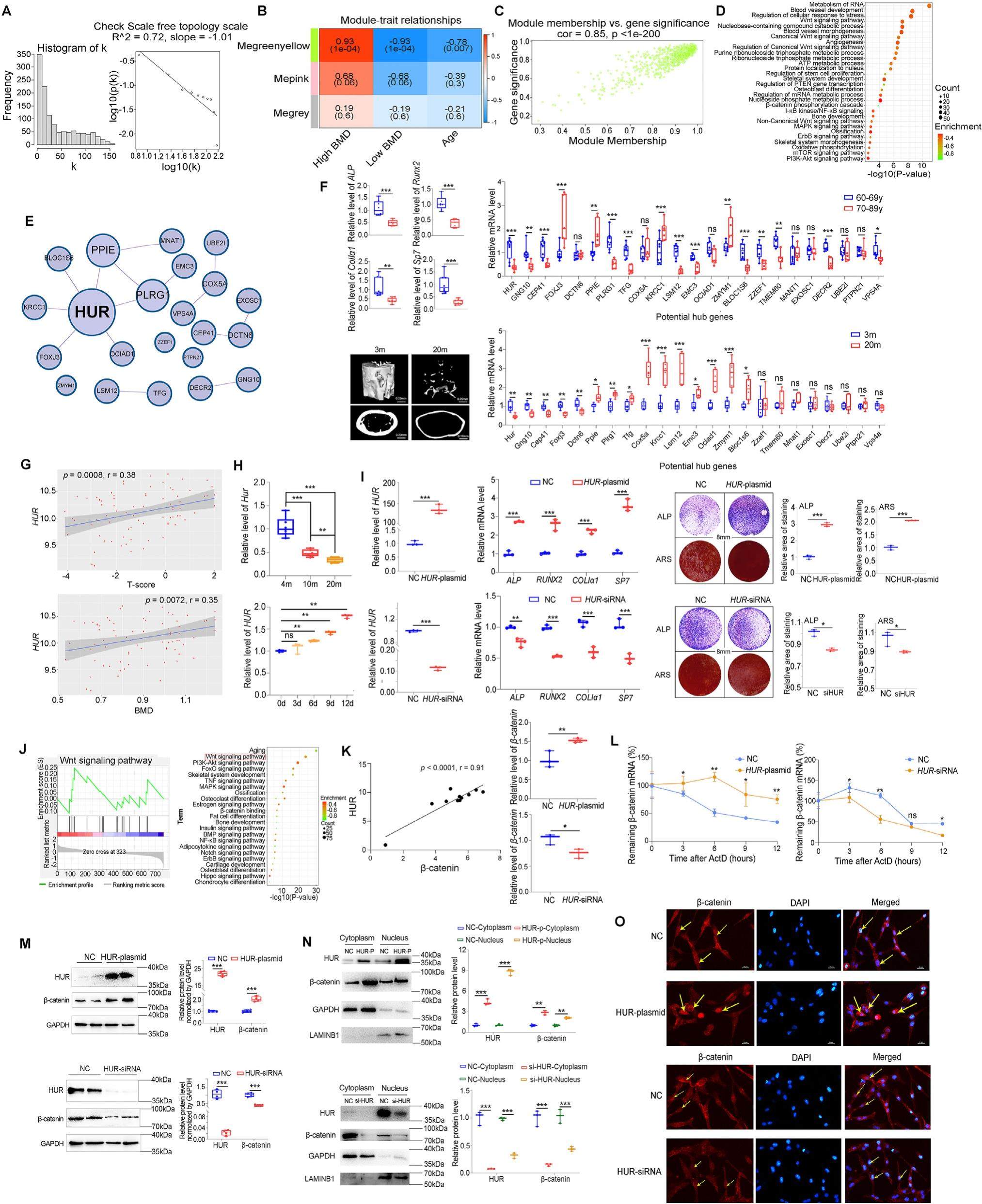
An integrated genome-wide analysis identifies HUR/ELAVL1 as a positive regulator of osteogenesis through enhancing the β-catenin signaling activity


Osteoporosis is a prevalent multifactorial bone disease with a strong genetic contribution. The heritability of traits that contribute to osteoporosis (bone mass, bone mineral density (BMD), bone size, bone loss and fractures) ranges from 50 to 85%, suggesting that a comprehensive understanding of the genetic basis may help identify new therapeutic targets. However, the genetic characteristics remain obscure, and the existing drug targets are associated with various challenges. Numerous studies have demonstrated that high-throughput sequencing data analysis is fruitful for identifying novel targets of human diseases. We therefore integrated GWAS and transcriptome analyses through Multimarker Analysis of GenoMic Annotation (MAGMA) and weighted gene co-expression network analysis (WGCNA) to identify new network modules and potential therapeutic genes for osteoporosis. As an illustration, the flow chart presenting the process of the present study was shown in.
